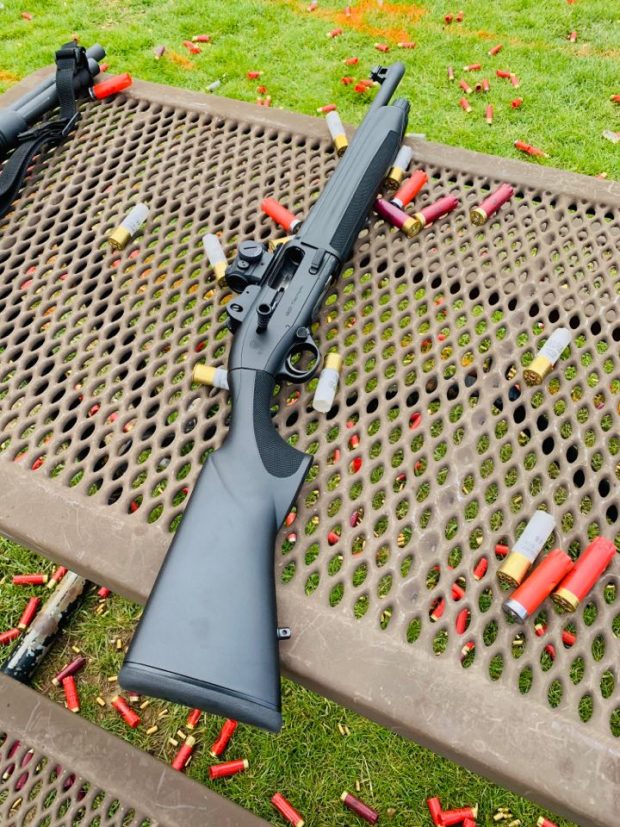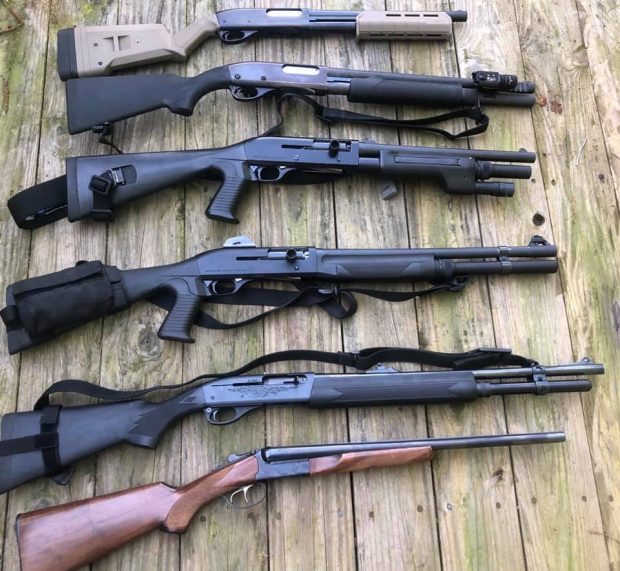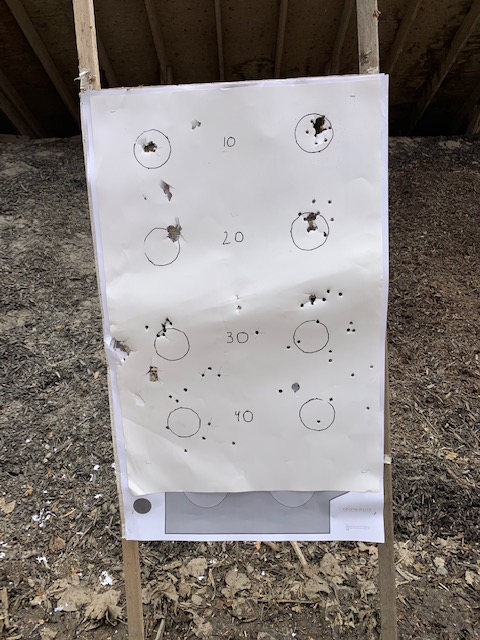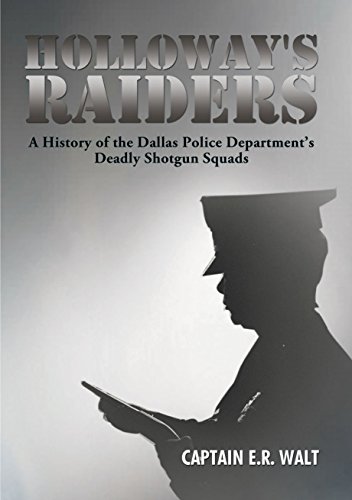Written by: Greg Ellifritz
Just a few short years ago, the cool kids in the gun game didn’t like shotguns. The modern disdain for the scattergun ran afoul of the most common expert advice I learned in my youth.
When I was growing up, a pump shotgun was universally recommended as the best home protection weapon available. Not much has changed in shotgun technology or ammunition for 100 years, but for awhile, the gauge fell out of public favor and was replaced by the AR-15 as the optimal defensive long gun.
Now the tide is turning yet again. The shotgun is making a comeback. I’m teaching more commercial shotgun classes this year than any other year in my training career. I think the shotgun popularity resurgence is largely driven by current events.
In the last year, we’ve lived through both a massive global pandemic and the highest level of rioting and mayhem in the streets of the USA since the 1970s. The demand for cartridges quickly outstripped the supply. Gun owners who hadn’t stocked up in advance of the election simply can’t find handgun and rifle ammunition right now. The shelves are bare. If you can find ammo to shoot in your pistols and rifles you have to be prepared to pay about a dollar a shot.
The interesting thing to me about the pandemic ammunition run, is that shotgun shells were much less affected than handgun or rifle cartridges. Even when the ammo shortage was it its worst, most of us could still get shotgun ammo from the local Walmart.

Besides having readily available ammo, another factor driving people towards shotguns is the current political/legal system within which we all operate. Savvy gun owners realize that there is a significant chance that semi-automatic rifles and pistols will be outlawed or seriously restricted within the next couple years. The iconic pump hunting shotgun will likely be one of the last firearm types restricted by our government.
These two facts have people buying up all the shotguns as soon as the guns hit the store shelves. They are gradually buying a few boxes of shells every now and then to start their own stockpile against future shortages.
These same people are also filling my shotgun classes to capacity because they want to learn how to operate what may be the only gun they are able to possess in the future. Predictions of the future are difficult endeavors. Don’t get caught up in the minutia. Learn, study, do things that facilitate growth. I fail to see any future scenario where having a more robust skill set across numerous domains could be harmful.
Back to shotguns…
Quite simply, there are things that the shotgun-armed defender can do that are almost impossible with a pistol or carbine.
I was reminded of this fact when recently reading the book Holloway’s Raiders. It is a tale of the Dallas police “shotgun squads,” cops armed with shotguns staking out convenience stores to shoot armed robbers from 1959 until the early 1980’s. The book details 36 different shotgun involved police gunfights. When you read the book, you will have no doubt about the shotgun’s value as a defensive weapon. Let’s look at a couple factors…
“Stopping Power”- In the 36 shotgun gunfights, 31 criminals were hit. Eighteen of those criminals died from their wounds. Only five of the 31 people shot required more than one round to neutralize. That means 25 out of 31 stopped after being hit with a single shotgun round.
An 81% “one shot stop” rate is quite enviable. In my 2011 study of handgun stopping power, I found that in nearly 1800 shootings, service caliber handgun loads stopped people with one shot between 34% and 49% of the time, depending on caliber. In 126 rifle-caliber shootings, the criminal stopped after one shot in only 58% of incidents. Twelve gauge 00 buckshot loads are likely the most potent shot for shot “manstoppers” we currently have available.
Lt. H.C. Holloway commanded the Dallas “shotgun squads” and investigated every shooting in which his officers were involved. According to the book, Lt. Holloway:
“…insisted that his officers use a shotgun on stakeouts and sometimes punished them for using ‘some damned pea-shooter’ instead, because his experience as a homicide detective and in his own armed encounters had shown him that a person hit solidly with a load of buckshot was usually dead or incapacitated immediately and that a handgun, any handgun, was not nearly as effective.”
During a 40+ year police career, Lt. Holloway undoubtedly saw the results of hundreds of shootings. How many shootings have you seen or studied? Lt. Holloway believed the shotgun was the most potent weapon a defender could use in a gunfight. His opinion might be worth listening to.

Hit rates- Hit rates with the shotgun were also extremely good. Holloway’s Raiders fired 73 rounds with their shotguns and hit their targets 43 times. That’s a 60% hit rate. Modern police hit rates range from 10% to 20% for most police departments. The rapidly spreading buckshot rounds made it easier to hit criminals who were on the run or moving quickly while shooting. Another plus for the shotgun.
Many folks today try to limit their defensive shotgun’s pattern spread by using tighter choke tubes or shotgun shells with wads that reduce pellet spread (like Federal’s Flite Control wad). A tighter pattern allows the shotgun to be used at longer ranges and reduces the chance of a stray pellet hitting an innocent bystander.
The cops on the “shotgun squads” used cylinder bore Remington 870s or Winchester Model 12s. They did not have the advantage of modern “Flite Control” shotgun wads. They used run-of-the-mill 00 buck or #1 buck loads. One might think that the rapid pattern spread of this shotgun and load combination would have led to many innocent people being hit by stray pellets. Not so. Despite all the shotgun pellets flying in these hectic gunfights, not a single innocent bystander was hit over a period of more than 20 years! Do you really think shotgun pattern spread is a bad thing? It isn’t, so long as you are smart about how you use your shotgun.
The 12 gauge shotgun worked admirably for “Holloway’s Raiders” and is still a viable option for home defense. Its stopping power is unmatched, and drops people with fewer shots than either a handgun or a carbine. The pattern spread increases the chances of a hit against a moving criminal, and most criminals who attack you WILL be moving. Those two factors make it a top choice for defensive encounters.

Patterning 00 Buck loads out of a Benelli M-1
Many folks disdain the shotgun for defensive work because pattern spread limits its use to a maximum effective range of between 25 and 35 yards. How many of you readers have a house where you can get a 35 yard shot inside? Probably not many of you. The shotgun’s relatively limited range isn’t a factor in most home defense shootings.
I like the AR-15 rifle/carbine better than most. It’s a great weapon, but it isn’t my choice for home defense. Even though I have eight different AR-15 pattern carbines (and a whole bunch of AKs and other rifles), my home defense guns are Benelli and Remington shotguns. They make it easy to hit bad guys and drop them quickly when hit. Isn’t that what most people are looking for in a defensive weapon?
Don’t discount the venerable shotgun as a home defense weapon. Officer Felix Woodrow, one of the original Holloway’s Raiders, said it best:
“Yeah. Holloway was right. Courtroom justice for a hi-jacker is fine as far as it goes…but a load of buckshot? Now that’s final.”



